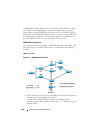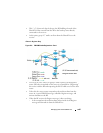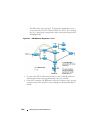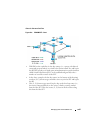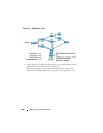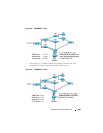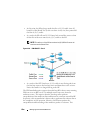
1352 Managing IPv4 and IPv6 Multicast
sending the encapsulated Register messages. This removes the load from
the CPU of the first-hop router and the RP, as they no longer need to
encapsulate and de-encapsulate register messages with multicast data.
These optimizations significantly reduce the load on first-hop routers and
RPs to encapsulate/de-encapsulate PIM register messages and their associated
multicast data. In addition, the switchover to the SPT is initiated
immediately upon the first multicast packet reaching the last-hop router. This
leads to significantly faster response times for receiving the full multicast
stream directly from the first-hop router (as opposed to the typical
bandwidth-limited stream traversing the RP).
Using PIM-DM as the Multicast Routing Protocol
Unlike PIM-SM, PIM-DM creates source-based shortest-path distribution
trees that make use of reverse-path forwarding (RPF). PIM-DM assumes that
when a sender starts sending data, all downstream routers and hosts want to
receive a multicast datagram. PIM-DM initially floods multicast traffic
throughout the network. Routers that do not have any downstream neighbors
prune back the unwanted traffic. In addition to PRUNE messages, PIM-DM
makes use of graft and assert messages. Graft messages are used whenever a
new host wants to join the group. Assert messages are used to shutoff
duplicate flows on the same multi-access network.
There are two versions of PIM-DM. Version 2 does not use the IGMP
message; instead, it uses a message that is encapsulated in an IP package, with
protocol number 103. In Version 2, a Hello message is introduced in place of a
query message.
PIM-DM is appropriate for:
• Densely distributed receivers
• Few senders-to-many receivers (due to frequent flooding)
• High volume of multicast traffic
• Constant stream of traffic
To minimize the repeated flooding of datagrams and subsequent pruning
associated with a particular source-group (S,G) pair, PIM-DM uses a State
Refresh message. This message is sent by the router(s) directly connected to
the source and is propagated throughout the network. When received by a



